Oct. 25 update on COVID-19 in MN: State health officials report 21 more deaths

Go Deeper.
Create an account or log in to save stories.
Like this?
Thanks for liking this story! We have added it to a list of your favorite stories.
Minnesota health officials reported 21 more COVID-19 deaths on Sunday, while the number of newly confirmed cases fell from Saturday's near-record high.
The number of active COVID-19 cases in the state also ticked downward from Saturday's record high of more than 13,000. It now stands at 12,968; it was 8,171 on Oct. 1.
Looking at averages over the past week, the daily increase in cases and the test positivity rate in Minnesota fell slightly on Sunday, while the average daily death toll climbed to 16.
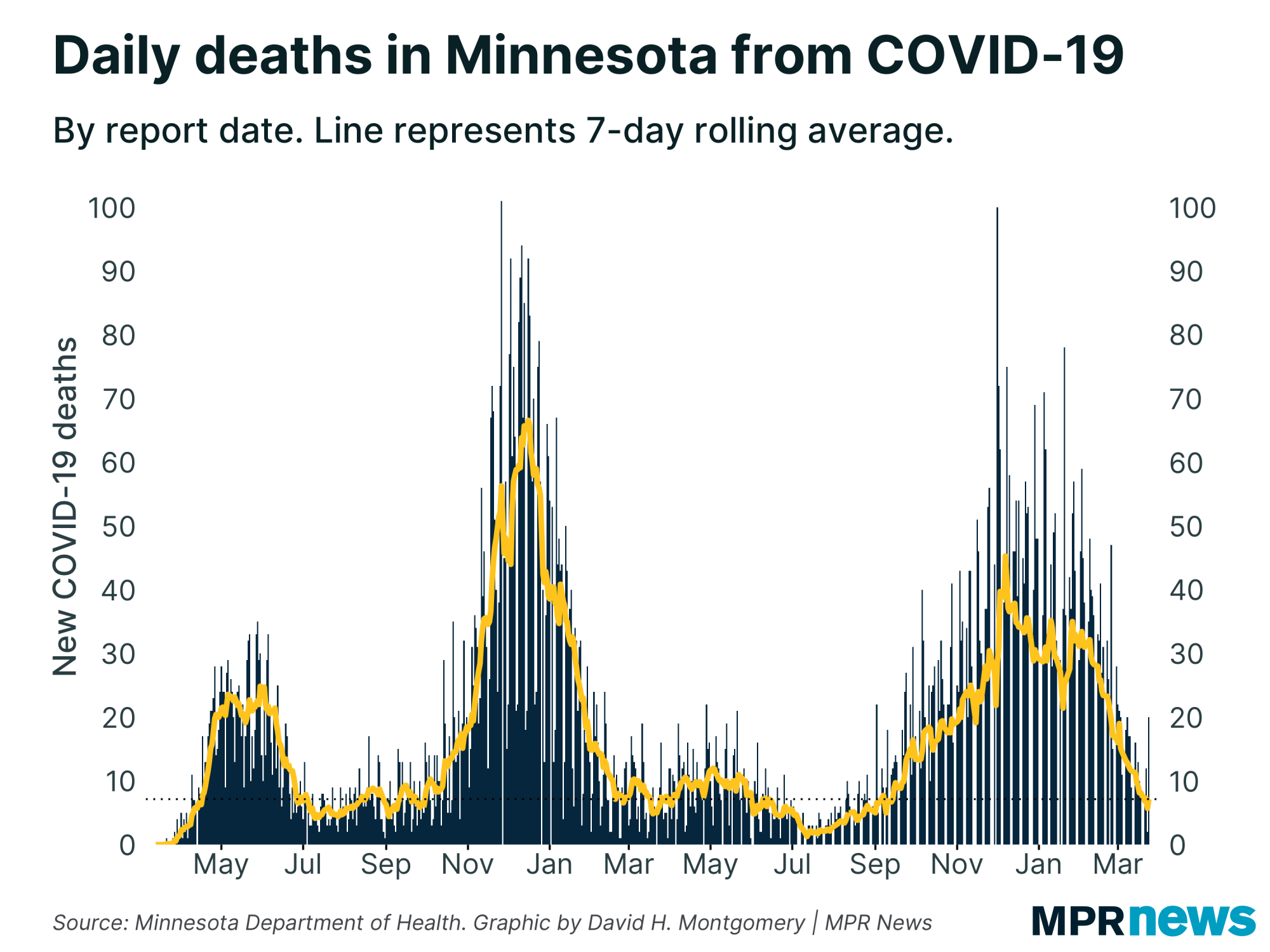
Here are Minnesota’s current COVID-19 statistics:
Turn Up Your Support
MPR News helps you turn down the noise and build shared understanding. Turn up your support for this public resource and keep trusted journalism accessible to all.
2,349 deaths (21 new)
133,802 positive cases (1,684 new); 118,485 off isolation
2,686,302 tests; 1,770,362 people tested
6.7 percent seven-day positive test rate
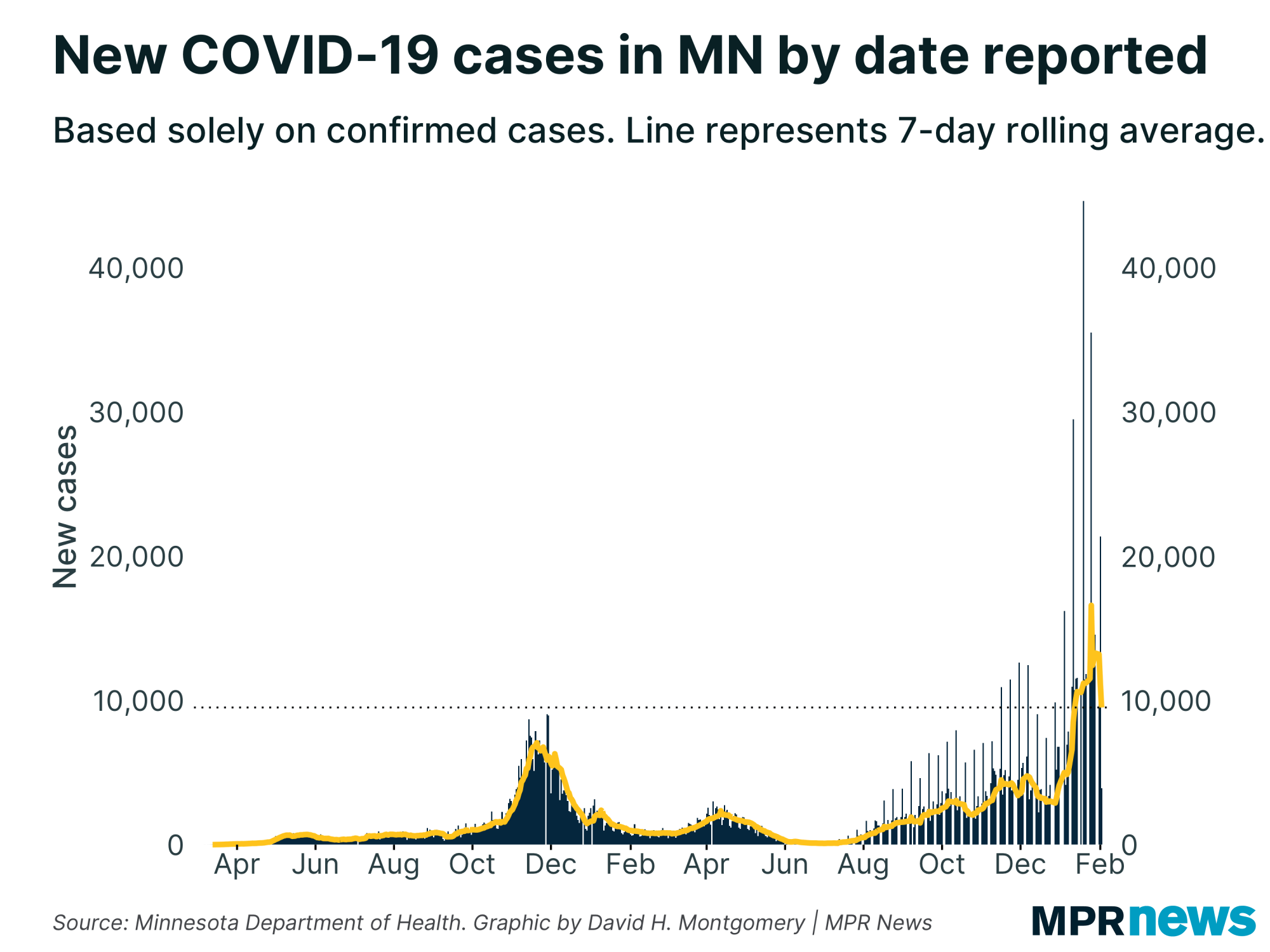
Twelve of the 21 deaths reported Sunday were residents of long-term care facilities. Those who died ranged in age from someone in their 30s to someone over 100.
Minnesota has now seen at least 1,000 new COVID-19 cases for 18 consecutive days.
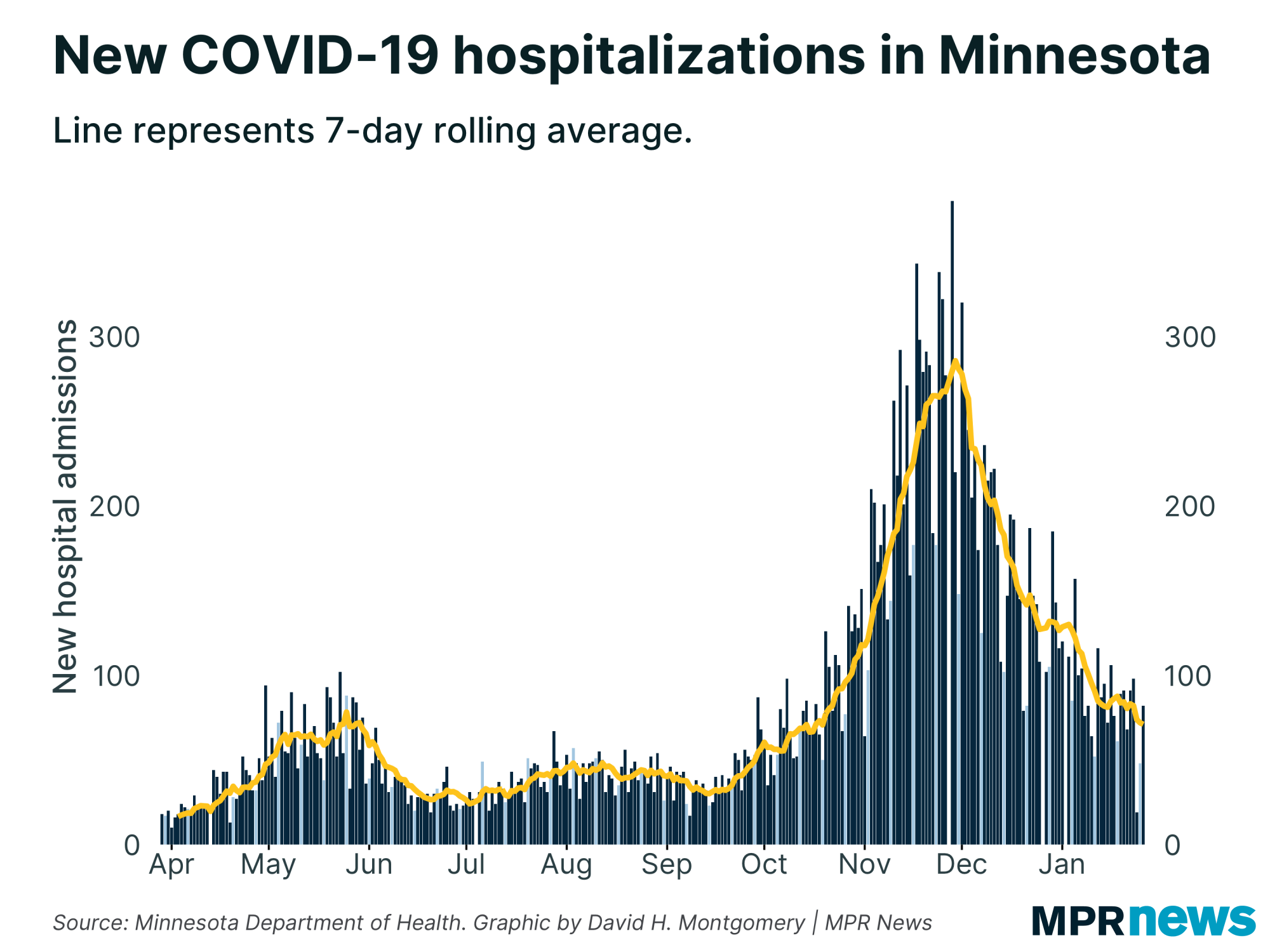
Sunday’s weekly average test positivity rate of 6.7 percent was down from 6.8 percent on Saturday, but up from about 4.6 percent in early October.
“There is more disease out there, and not just because we’re doing more testing,” Health Commissioner Jan Malcolm told reporters Friday.
She said 565 people were in hospitals as of Friday with 160 needing intensive care. Both are near their late-May highs.
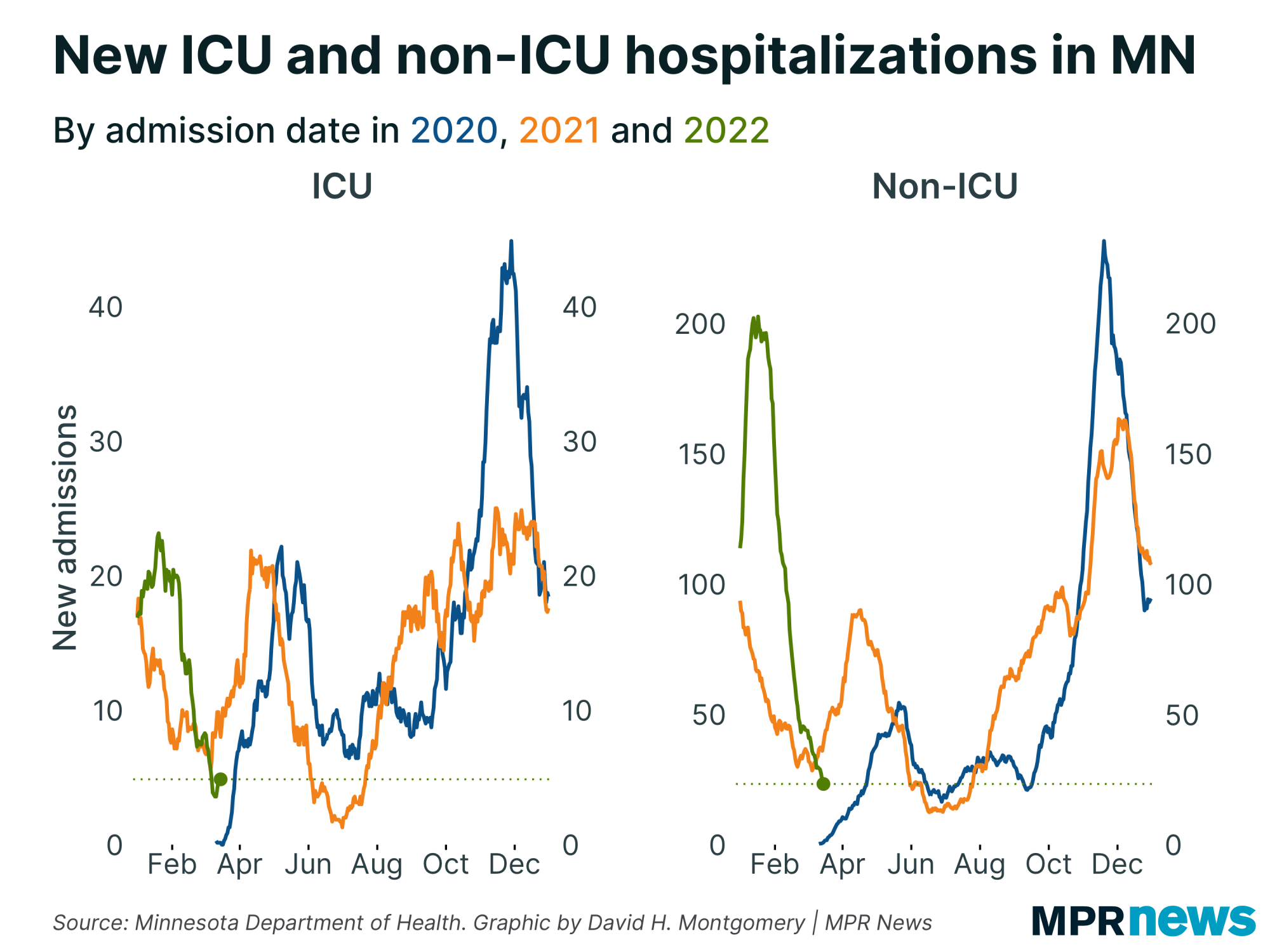
Caseloads rising across age groups
New cases are up dramatically over the past month in all age groups. That includes a concerning rise in the number of new cases among Minnesotans ages 60 and older.
People in their 20s still make up the age bracket with the state’s largest number of confirmed cases — more than 29,000 since the pandemic began, including more than 16,600 among people ages 20-24.
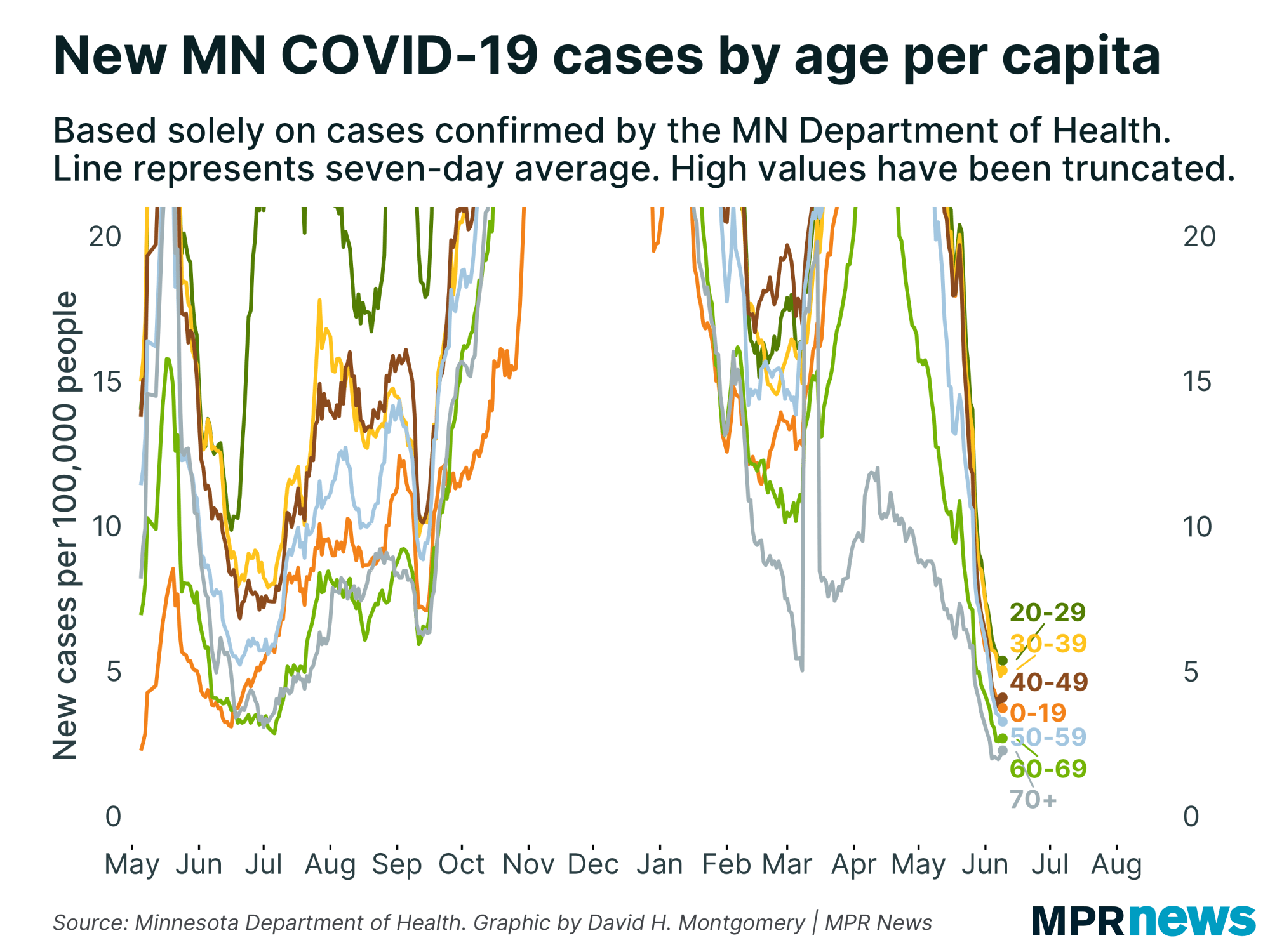
The numbers help explain why experts remain particularly concerned about young adults as spreaders of the virus.
While less likely to feel the worst effects of the disease and end up hospitalized, experts worry youth and young adults will spread it to grandparents and other vulnerable populations and that spread could hamper attempts to reopen schools and campuses completely to in-person teaching.
The number of high school-age children confirmed with the disease has also grown, with more than 11,900 total cases among children ages 15 to 19 since the pandemic began.
Cases surging along Minnesota’s western border
Regionally, central, northern and southern Minnesota have driven much of the recent increase in new cases while Hennepin and Ramsey counties show some of the slowest case growth in the state.
Newly reported cases are highest in western Minnesota — the northwest, west-central and southwest areas of the state have been averaging more than 40 new cases per day per 100,000 people, higher than any of the state’s central and eastern regions.
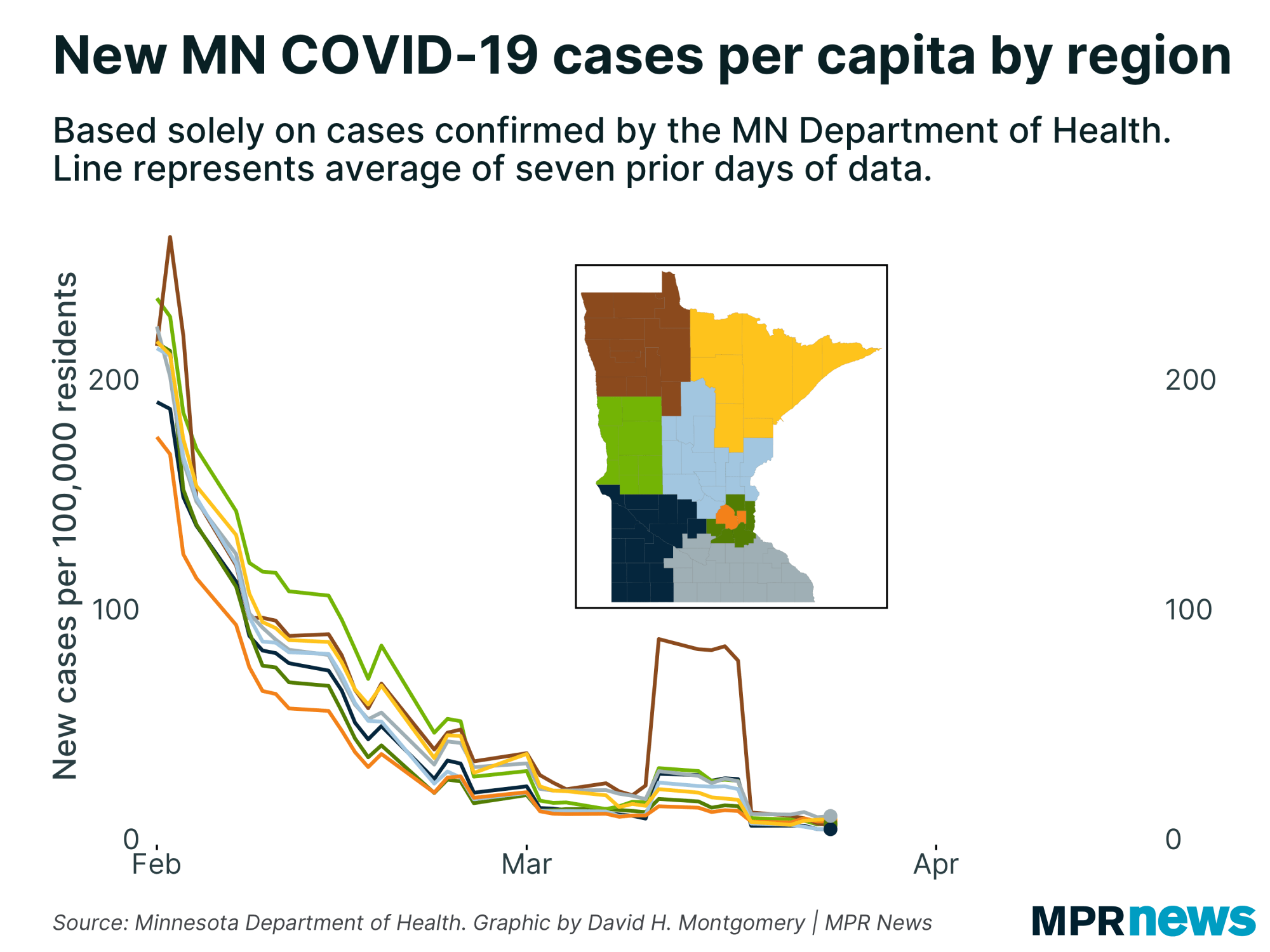
The data don’t explain why. However, cases are surging currently in the Dakotas. North Dakota has the country’s worst per-capita spread rate.
Collectively, rural areas of Minnesota continue to report the most new COVID-19 cases.
Northern Minnesota, once the region least affected by the disease, has also seen its caseload grow dramatically in recent weeks. Northwestern Minnesota continues to see cases rise swiftly relative to it population.
The largest current hot spot counties are all in northwestern Minnesota:
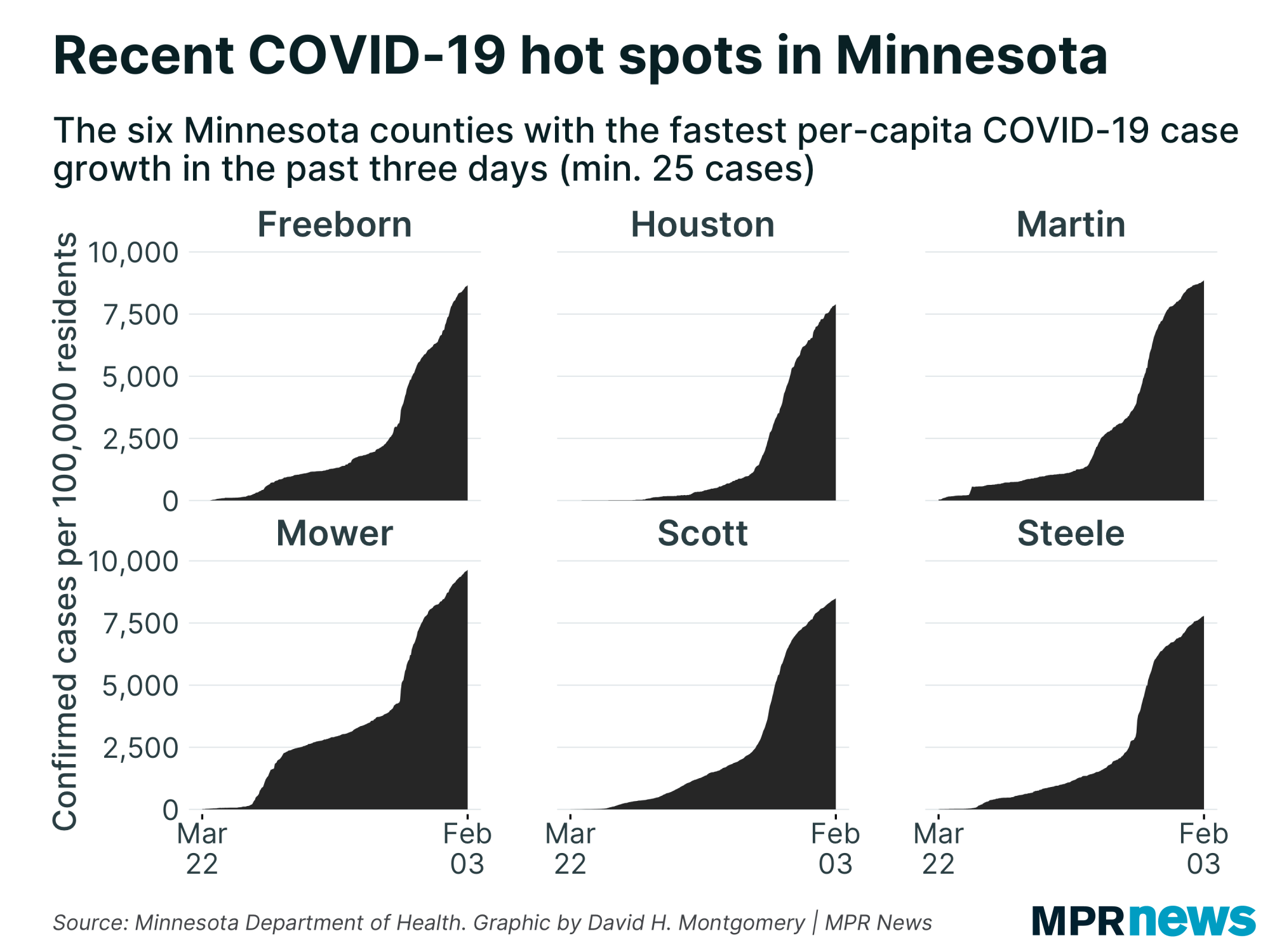
“We are seeing more deaths in greater Minnesota because we are seeing more cases there,” Kris Ehresmann, the state’s infectious disease director, said Wednesday. “We will see more and more deaths from greater Minnesota because of the high caseload.”
Ehresmann and Malcolm tied the recent steep rise in cases and deaths to “COVID fatigue” but also described people who are ill but refuse to get tested because they don't want to admit they have it and don't quarantine as a contributing factor in spreading the disease.
Latino, Indigenous cases jump
In Minnesota and across the country, COVID-19 has hit communities of color disproportionately hard in both cases and deaths.
Minnesotans of Hispanic descent are testing positive for COVID-19 at about five times the rate of white Minnesotans. They, along with Black Minnesotans, are also being hospitalized and moved to intensive care units at higher rates than the overall population.
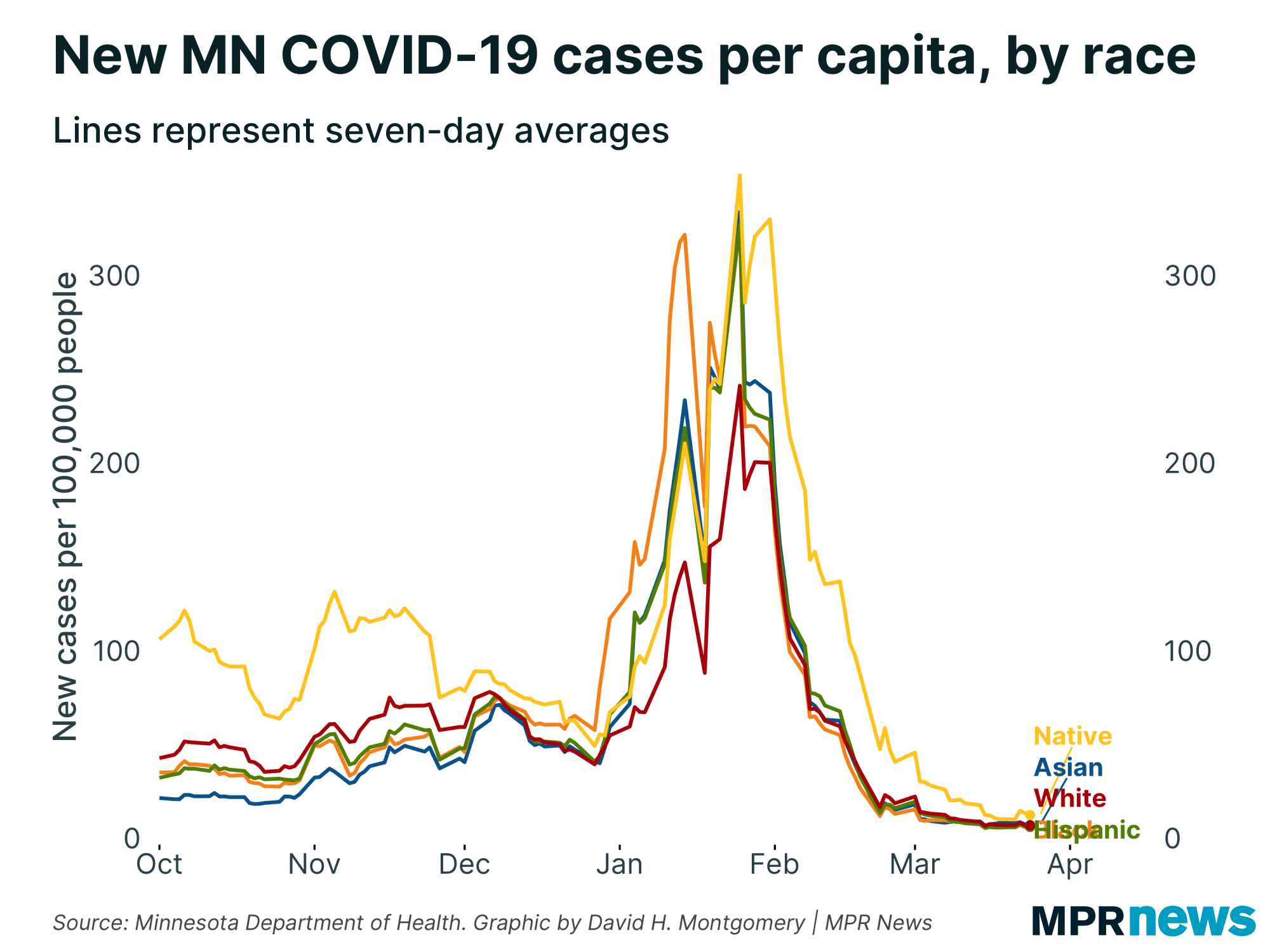
Similar trends hold true for Minnesota’s Indigenous residents. Counts among Indigenous people have jumped in October relative to population. The number of new COVID-19 cases among Native Americans has grown by about 75 percent in the past month.
Data the past two weeks also show newly confirmed cases continuing to accelerate among Latino people in Minnesota.
Distrust of the government, together with deeply rooted health and economic disparities, have hampered efforts to boost testing among communities of color, particularly for unauthorized immigrants who fear their personal information may be used to deport them.
Developments around the state
MN launches in-home COVID-19 saliva testing program
The Minnesota Department of Health on Thursday launched an at-home saliva testing pilot program in two dozen counties or tribal nations around the state. Most locations have few testing options and many are in greater Minnesota, where spread of the virus has been rapid in recent weeks.
The state has contracted with Vault Health to provide the saliva tests, which have been rolled out at in-person collection sites around the state.
People in these counties will be able to order the same test through the mail. It will be shipped to their home and performed with the help of a health care professional over the internet. The test will then be shipped to a facility in Oakdale, and results will be available electronically in 24-48 hours.
Test-takers will be asked for insurance information, but it will be free if insurance won't cover it or if they don't have insurance.
— Catharine Richert | MPR News
Top headlines
Tribal leaders urge caution as COVID-19 cases surge: In the past month, the number of COVID-19 cases among Native Americans in Minnesota has grown by 75 percent. As a result, tribal leaders across Minnesota are pleading with community members to take precautions to slow the spread of the virus.
Hotel stays help dozens experiencing homelessness find more permanent homes: Hennepin County moved people, especially those most vulnerable to the worst effects of COVID-19, from shelters into private rooms in five hotels. The plan was to reduce crowding and protect people most at risk. There was another benefit: 56 people have moved into permanent housing since the start of the hotel efforts.
AstraZeneca, J&J resuming U.S. tests of COVID-19 vaccines: Testing of AstraZeneca’s vaccine candidate had been halted since early September, while Johnson & Johnson’s vaccine study was paused at the beginning of last week. Each company had a study volunteer develop a serious health issue, requiring a review of safety data.
COVID-19 in Minnesota
Data in these graphs are based on the Minnesota Department of Health's cumulative totals released at 11 a.m. daily. You can find more detailed statistics on COVID-19 at the Health Department website.


